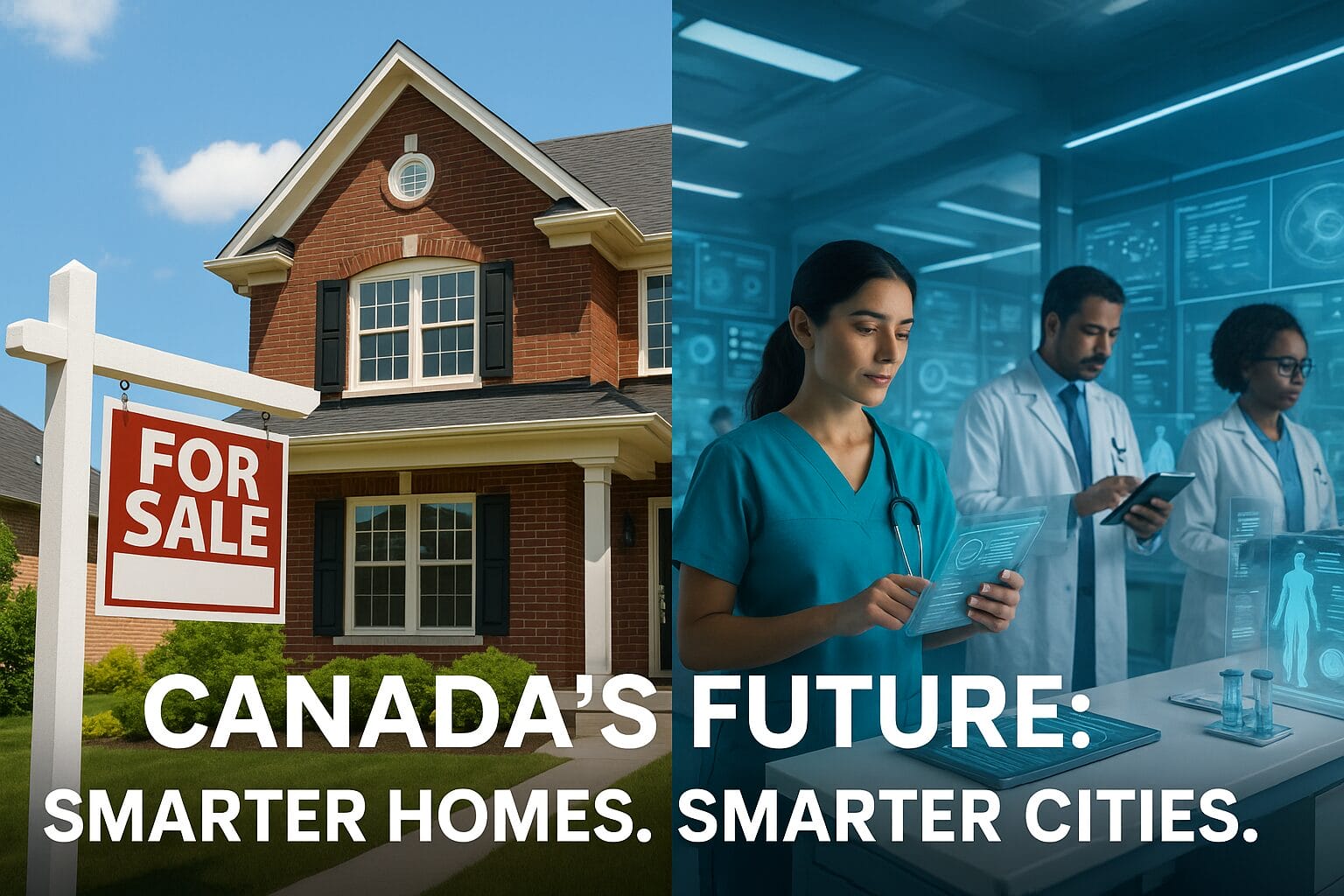Toronto isn’t just a housing market—it’s a testbed for the future of smart, equitable, and secure urban living. As conversations deepen around real estate bottlenecks, a parallel evolution is taking place: AI is transforming healthcare, security, infrastructure, and even the way we plan neighbourhoods. What ties these together is quality of life, and both sectors are reaching critical inflection points.
1. AI in Healthcare Workflow: Redefining Frontline Efficiency
Across Canada, AI is freeing up frontline healthcare workers by automating time-consuming tasks:
- Transcribing and structuring patient notes
- Summarizing doctor-patient conversations
- Handling intake forms and medical history organization
These innovations allow doctors to spend more time with patients—a priority in overburdened public systems. In cities like Toronto, where healthcare demand is rising alongside population, AI is not a luxury—it’s a necessity.
2. Bias and Representation in AI: A Matter of Life and Death
AI can only be as inclusive as the data it’s trained on. At recent health tech forums, a recurring theme was this stark reality:
“If marginalized communities aren’t involved in designing AI, their lives may be left out.”
An example? Some AI skin cancer models have failed to detect melanomas in Black patients due to biased training datasets.
Urban equity means more than housing affordability—it includes ensuring technology works for everyone. This is especially urgent in diverse cities like Toronto, where demographic representation must extend to healthcare algorithms.
3. Governance and Ethical AI: Explainability is Non-Negotiable
Major institutions like CIBC are leading by example:
“We don’t deploy AI unless we can fully explain how it works.”
Transparent, accountable AI is critical in healthcare and civic planning. This is about building human-centred policies where ethics are built into every stage: design, development, and deployment.
Cities that adopt AI need frameworks that earn public trust—a lesson Toronto must absorb as both a tech and real estate hub.
4. Security Risks in Healthcare Tech: An Underestimated Urban Threat
Healthcare systems are increasingly targeted by cyberattacks—especially via outdated or unpatched medical devices. A single legacy machine can serve as an entry point for devastating breaches.
Hospitals are now moving toward:
- Zero-trust frameworks
- IT and clinical engineering integration
- Network segmentation
For smart cities, cybersecurity must be built into the infrastructure—just as fire codes and power grids are today.
5. Leadership and Policy Advocacy: Diverse Voices, Smarter Systems
Policies and technologies built without diversity risk becoming tools of exclusion. Across events and roundtables, one truth stood out:
“AI and innovation can’t be top-down.”
This means empowering underrepresented voices in:
- Healthcare boards
- AI working groups
- Civic design councils
Toronto’s real estate policy and tech adoption need to reflect all communities, not just the loudest or wealthiest. Inclusion leads to better planning, stronger systems, and fairer outcomes.
6. AI for Predictive and Preventive Care: From Reaction to Forecasting
AI is moving healthcare from treatment to prevention:
- Predicting Type 2 diabetes years before symptoms
- Using ECG data to flag future cardiac risks
- Tailoring interventions based on longitudinal health data
This leap forward is essential in communities with high chronic disease rates—often the same communities underserved by both health and housing systems.
Smarter real estate must integrate health accessibility—from proximity to clinics, to data-powered public health planning.
7. Infrastructure and Power Needs: The Silent Backbone of Smart Cities
AI is resource-intensive. Without upgraded data centers, clean power grids, and efficient cooling systems, healthcare tech will buckle under demand.
Real estate developers and city planners must begin treating AI-ready infrastructure as essential—just like roads or sewers.
This includes:
- Climate-controlled server rooms in hospitals
- Localized energy systems
- Redundant power and data networks for critical care
If Toronto is to be a smart city, it must future-proof its physical environment—starting with both homes and hospitals.
Where Housing Meets Health Innovation
Toronto’s current real estate dilemma—delayed condos, high costs, and undersupply—mirrors healthcare’s struggle with aging infrastructure, security gaps, and ethics in AI.
The path forward? Long-term investments in quality freehold homes, human-centred AI development, and inclusive governance.
Whether buying a house or deploying a health tech solution, one truth holds:
Smarter systems begin with thoughtful design and inclusive leadership.




